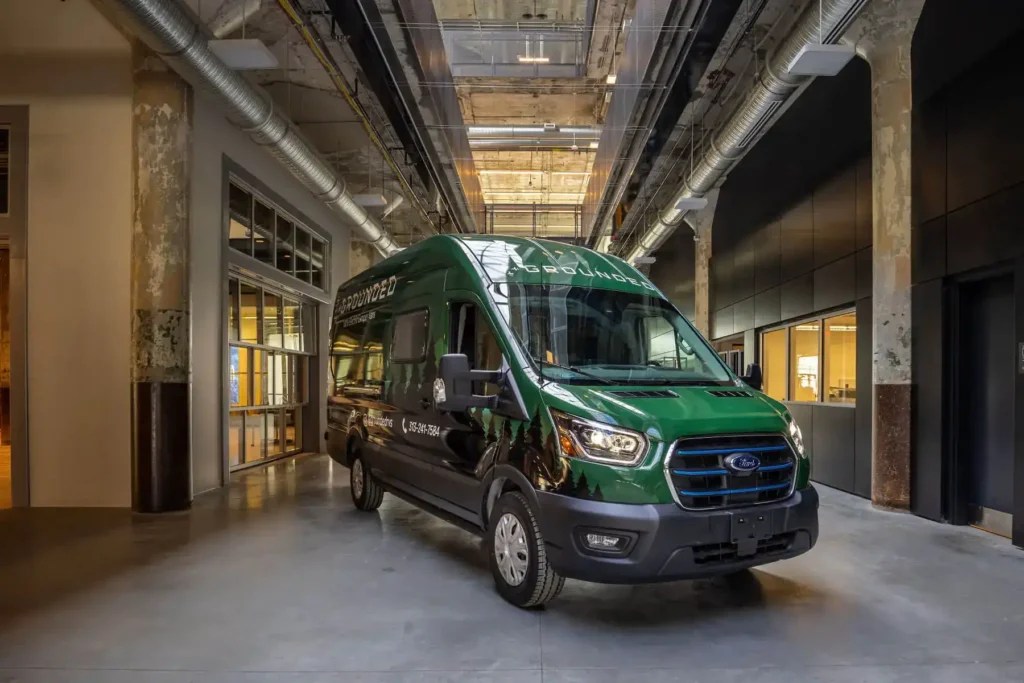Are you parents looking to transform your family van into a green oasis on wheels? Look no further!
We’ve got the foundational green camper conversion tips you need to create the perfect space for your family’s adventures. Join us as we explore energy-efficient appliances, sustainable materials, and eco-friendly design choices.
Get ready to embark on a journey towards a greener and more sustainable lifestyle with your family van!
Key Takeaways
- Increased connection with nature and immersion in the natural world
- Utilization of sustainable and renewable materials for the camper conversion
- Careful planning and consideration of layout and functionality
- Incorporation of energy-efficient appliances and systems for a more sustainable lifestyle on the road
Benefits of Green Camper Conversions for Families
One of the benefits we’ve discovered from our green camper conversion is the increased sense of connection with nature. Being surrounded by eco-friendly materials and using renewable energy sources allows us to truly immerse ourselves in the natural world.
We can easily park our camper in breathtaking locations, waking up to stunning views and the soothing sounds of nature. It’s a liberating feeling, knowing that we can experience the freedom of the open road while still respecting and appreciating the environment.
Essential Tools and Materials for a Green Camper Conversion
We gathered all the necessary tools and materials, and then we got to work on our green camper conversion.
As parents who desire freedom and a sustainable lifestyle, we made sure to choose eco-friendly options whenever possible. Some essential tools we needed included a drill, screwdriver, measuring tape, and saw.
For materials, we opted for sustainable and renewable options like bamboo flooring, recycled insulation, and low VOC paint. It’s important to research and choose materials that align with your green goals and values.
Planning and Designing Your Green Camper Conversion
As parents, we carefully considered the layout and functionality of our green camper conversion, ensuring that it would meet our family’s needs while also promoting sustainability.

We started by creating a detailed floor plan, taking into account the sleeping arrangements, seating areas, and storage spaces. We also made sure to incorporate eco-friendly materials and energy-efficient appliances.
Additionally, we planned for ample natural lighting and ventilation to enhance our camping experience.
Eco-Friendly Insulation and Flooring Options for Campers
When it comes to eco-friendly insulation and flooring options for campers, it’s important to consider materials that are sustainable and energy-efficient.
Insulation plays a crucial role in maintaining a comfortable temperature inside the camper, while flooring adds to the overall aesthetic and functionality.
For insulation, materials like sheep’s wool, recycled denim, or cork are great options as they’re renewable and provide excellent thermal insulation.
As for flooring, materials such as bamboo, reclaimed wood, or linoleum are durable, easy to clean, and environmentally friendly choices.
Choose materials that align with your eco-conscious values and create a green oasis on wheels.
Energy-Efficient Appliances and Systems for Green Camper Living
There are a variety of energy-efficient appliances and systems available for green camper living, and they can greatly contribute to a more sustainable and eco-friendly lifestyle on the road. Here are four essential options to consider:
- Solar panels: Harness the power of the sun to generate electricity and charge your camper’s batteries.
- Energy-efficient refrigerators: Choose models that consume less power and have improved insulation.
- LED lighting: Replace traditional bulbs with energy-efficient LED lights to reduce energy consumption.
- Composting toilets: Install a composting toilet to minimize water usage and eliminate the need for a traditional sewage system.
Maintaining Sustainability on the Road: Tips for Eco-Conscious Travelers
To maintain sustainability on the road, we can adopt a variety of eco-conscious practices and adhere to green principles while traveling in our camper.
One way to do this is by reducing our energy consumption. We can use energy-efficient appliances and systems, such as solar panels and LED lights, to minimize our carbon footprint.
Additionally, we should be mindful of our waste management. This includes reducing, reusing, and recycling as much as possible, as well as properly disposing of any waste we generate.
Conclusion
In conclusion, transforming your family van into a green oasis on wheels isn’t only beneficial for the environment but also for your family’s well-being.
By following the foundational green camper conversion tips outlined in this article, you can create a sustainable and eco-friendly space for your adventures.
From energy-efficient appliances to eco-friendly materials, there are plenty of options to make your camper conversion project a success.
So, get ready to embark on a greener and more sustainable lifestyle with your family van!
You May Also Like:
